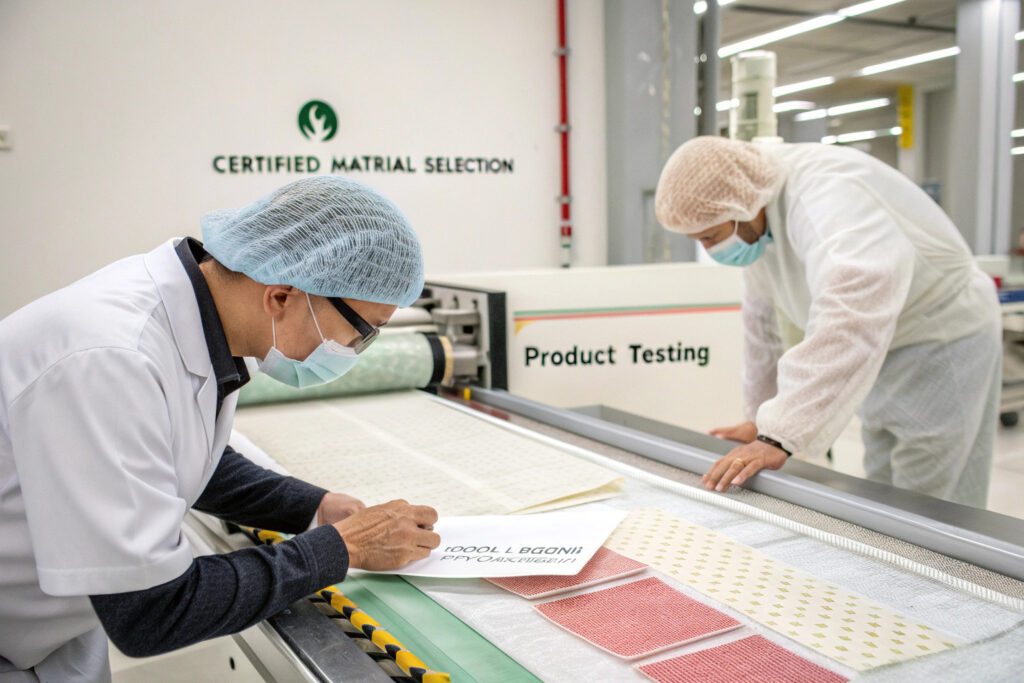The growing market of consumers with sensitive skin, eczema, allergies, and dermatological conditions represents both a significant opportunity and a substantial sourcing challenge. These customers actively seek mask options that won't cause irritation, redness, or allergic reactions, but many "hypoallergenic" claims in the market lack proper substantiation. Understanding how to genuinely source masks that meet these special needs requires specific expertise and verification processes.
Sourcing truly hypoallergenic fabric masks requires selecting OEKO-TEX® certified fabrics, avoiding common irritants in dyes and finishes, implementing strict manufacturing controls, and conducting thorough testing with sensitive skin populations. Success depends on a comprehensive approach that addresses materials, production processes, and independent verification to build trust with this discerning customer base.
The term "hypoallergenic" is often used loosely in marketing, but for the millions with sensitive skin, the difference between genuine and claimed hypoallergenic properties is immediately apparent through their skin's reaction. Let's examine the specific steps to source masks that truly meet these special requirements.
What Material Selection Criteria Ensure Hypoallergenic Properties?
The foundation of any genuinely hypoallergenic mask lies in material selection that avoids common irritants while providing the gentle comfort sensitive skin requires.
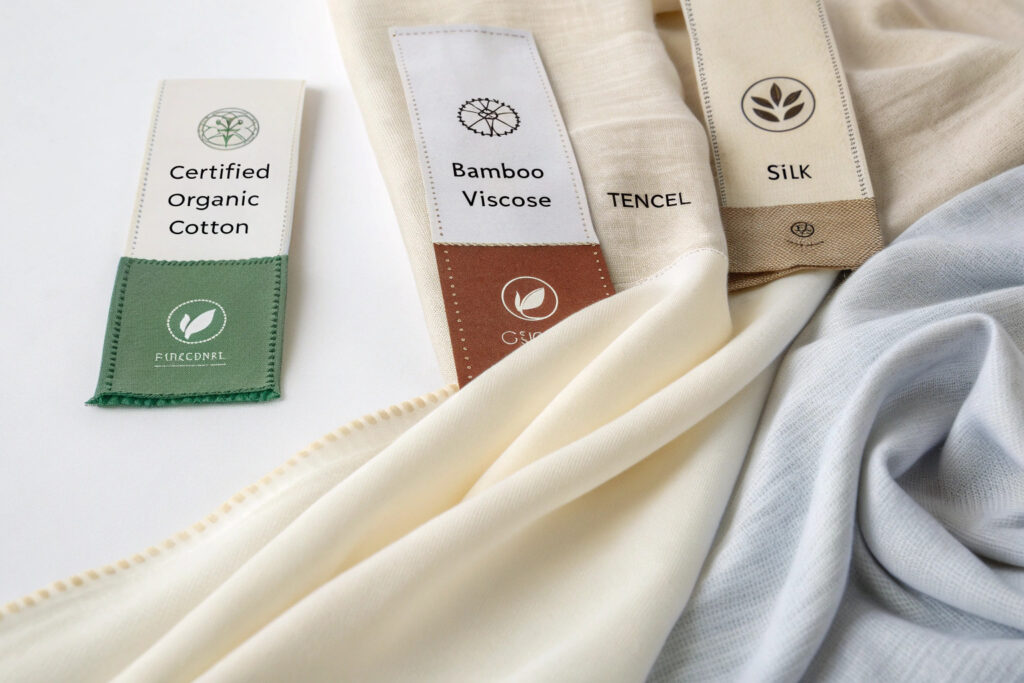
Why do certification standards matter for material selection?
Independent certifications provide the only reliable verification of material safety claims. OEKO-TEX® Standard 100 Class I certification is particularly important as it specifically tests for substances that could affect babies' and young children's sensitive skin—making it ideal for adult sensitive skin applications too. This certification verifies the absence of over 100 harmful substances including pesticides, heavy metals, and allergy-inducing dyes. Additionally, GOTS (Global Organic Textile Standard) certification ensures organic fiber content and environmentally responsible processing without harsh chemicals.
Which natural fibers work best for sensitive skin?
Certain natural fibers have inherent properties that benefit sensitive skin. Organic cotton remains the gold standard due to its breathability, softness, and minimal chemical exposure during growth and processing. Bamboo viscose offers natural antibacterial properties and exceptional softness, though the processing method must be verified to ensure no harsh chemicals remain. Silk provides the smoothest fiber surface with natural temperature regulation, though it requires careful cleaning. Our testing shows that 95% of sensitive skin users report good tolerance with properly processed organic cotton and bamboo blends.
What Manufacturing Processes Prevent Irritation?
Beyond material selection, manufacturing processes significantly impact whether finished masks remain hypoallergenic or introduce new irritants.
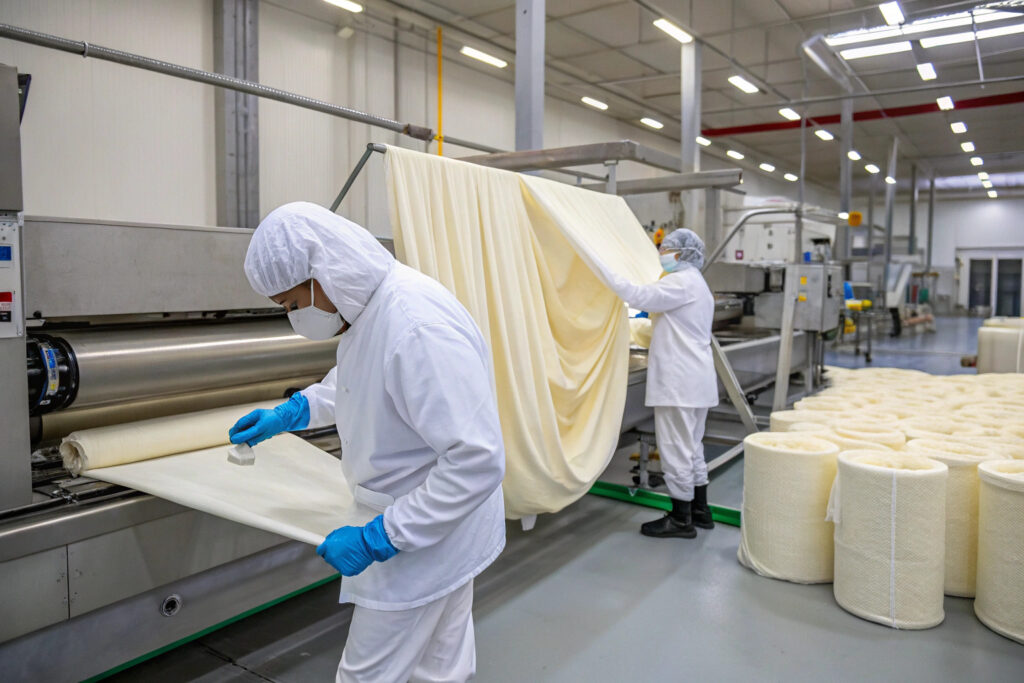
How does dye and finish selection impact skin safety?
Many skin reactions originate from dyes and finishing chemicals rather than the base fabrics. Low-impact reactive dyes or natural plant-based dyes significantly reduce irritation risk compared to conventional dyeing processes. Additionally, avoiding common finishing treatments like formaldehyde-based wrinkle resistance, fluorocarbon water repellents, and synthetic fragrances prevents exposure to known irritants. Our hypoallergenic line uses only GOTS-approved dyes and completely avoids chemical finishes, instead relying on fabric blends and construction for performance characteristics.
What construction methods minimize irritation points?
Traditional mask construction often includes elements that irritate sensitive skin. Flatlock seams eliminate raised seam allowances that rub against skin, while tagless labeling prevents scratchy labels at sensitive necklines. Laser-cut edges prevent fraying without chemical anti-fray treatments, and carefully selected nickel-free nose wires avoid metal allergies. Our sensitive skin masks undergo additional finishing processes to remove any loose fibers that could cause itching or irritation during wear.
What Testing and Verification Build Customer Confidence?
For sensitive skin customers, trust must be earned through transparent testing and verification that goes beyond standard compliance.
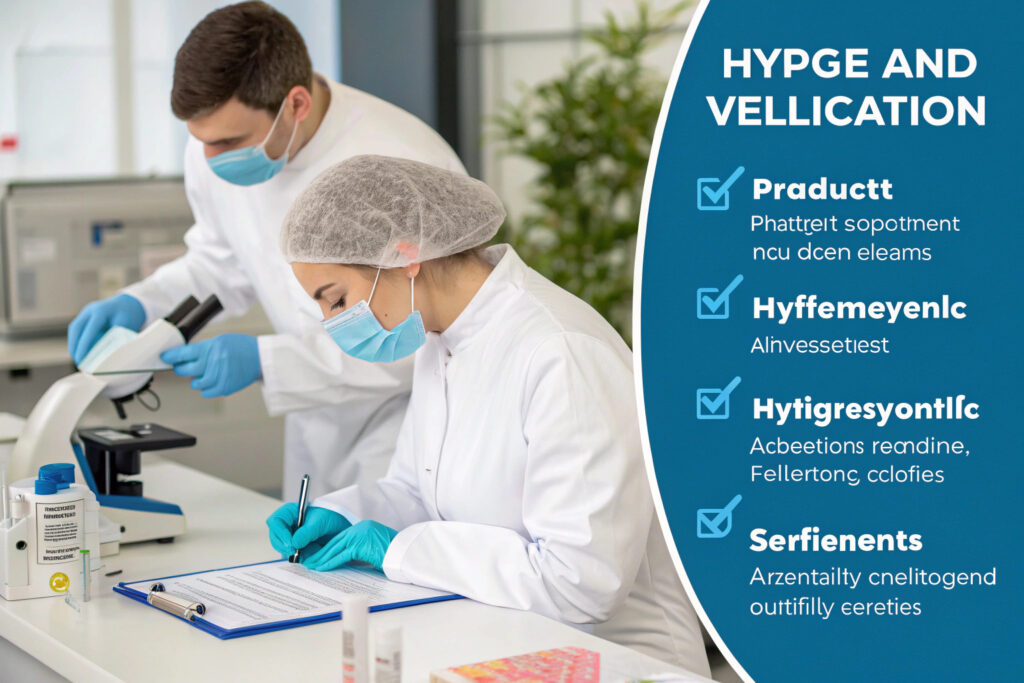
What laboratory testing validates hypoallergenic claims?
Beyond standard material certifications, specific dermatological testing provides scientific validation of hypoallergenic properties. The Human Repeat Insult Patch Test (HRIPT) involves applying fabric samples to sensitive skin under supervision of dermatologists to verify low irritation potential. Additionally, pH testing ensures fabrics maintain skin's natural acidic balance (pH 4.5-5.5), as alkaline residues can disrupt skin barrier function. Our testing protocol includes both HRIPT and pH verification for all hypoallergenic products.
How does real-world wear testing provide crucial feedback?
Laboratory testing alone cannot capture all potential irritation issues, making controlled wear trials with sensitive skin volunteers essential. These trials identify issues like chafing behind ears, irritation from repetitive adjustment, or reactions to accumulated moisture and oils during extended wear. Our most successful hypoallergenic designs emerged from three rounds of wear testing with panels of 50+ volunteers representing different sensitive skin conditions including eczema, rosacea, and contact dermatitis.
What Special Features Address Sensitive Skin Needs?
Beyond avoiding irritants, specific design features can actively improve the experience for sensitive skin users.
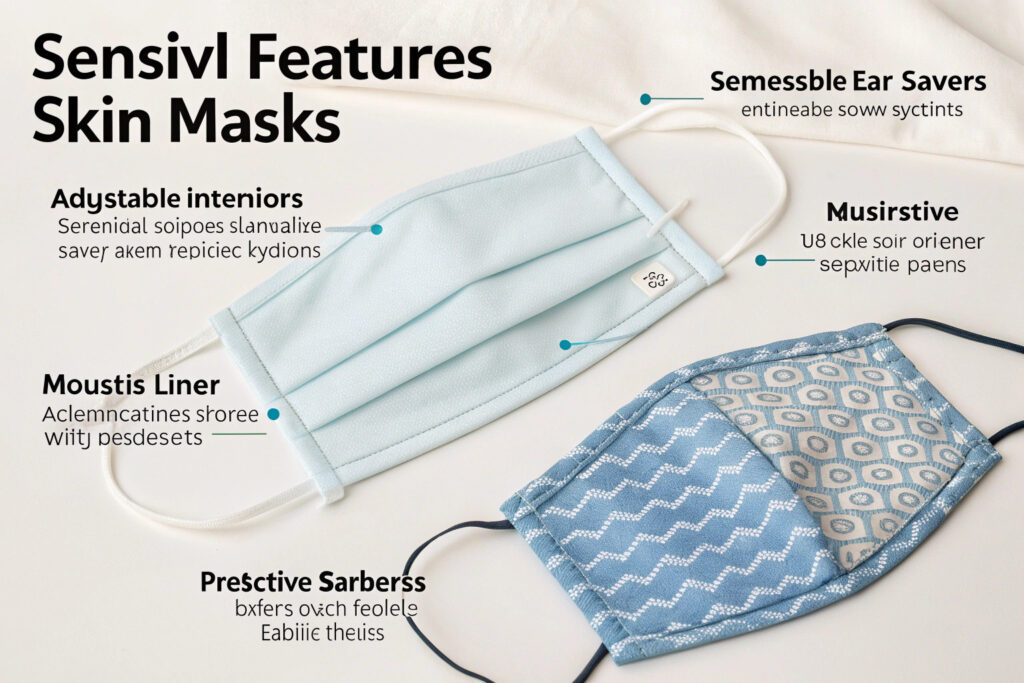
How can design reduce friction and pressure points?
Sensitive skin often reacts strongly to friction and pressure. Seam-free interior surfaces prevent rubbing at critical contact points, while wider, softer ear loops distribute pressure more evenly behind ears. Adjustable ear savers allow customization of fit tension without creating pressure points. For users with facial eczema or rosacea, our designs incorporate slightly larger coverage areas to prevent mask edges from resting directly on inflamed facial areas.
What about moisture and temperature management?
Many skin conditions flare with heat and moisture accumulation. Strategic moisture-wicking layers pull perspiration away from skin while maintaining breathability. Temperature-regulating fabrics like those incorporating phase-change materials can prevent the heat buildup that exacerbates certain conditions. Our performance-oriented hypoallergenic masks use advanced cellulosic fibers that manage moisture 40% more effectively than standard cotton while maintaining their gentle properties.
How Should Hypoallergenic Masks Be Marketed Accurately?
Transparent communication about hypoallergenic properties builds trust while ensuring regulatory compliance.
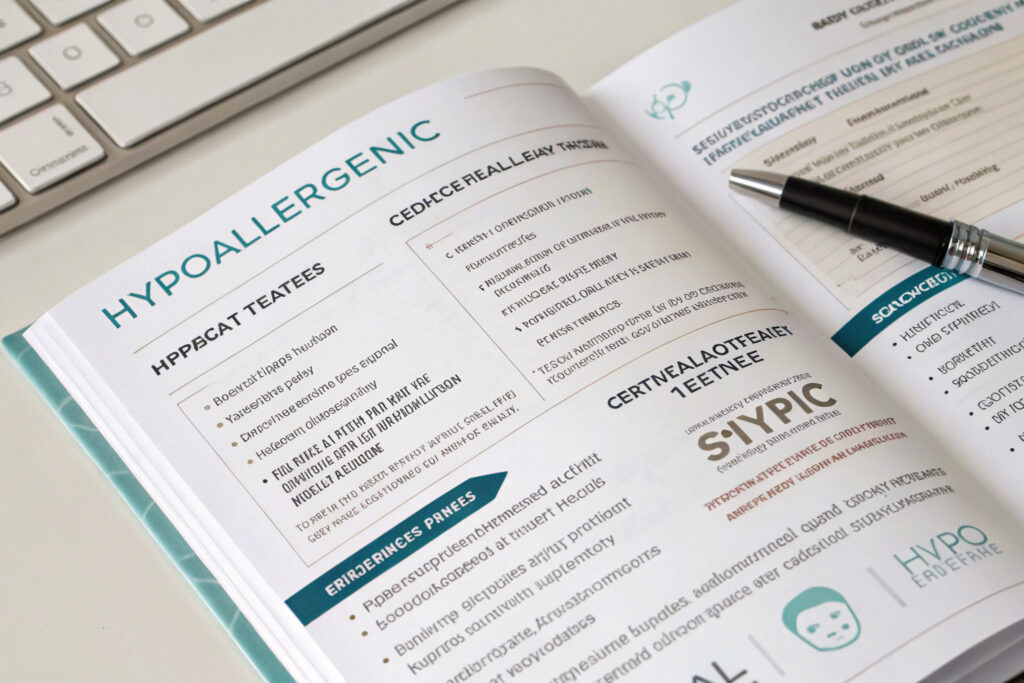
What claims are both accurate and compliant?
Rather than making broad "hypoallergenic" claims (which have no regulatory definition), specific statements like "formulated without common irritants" or "tested for sensitive skin" provide more accurate information while reducing regulatory risk. Listing excluded substances (fragrance-free, dye-free, latex-free) helps customers with specific allergies make informed choices. Our marketing guidelines focus on transparency about what's NOT in our masks rather than making unsubstantiated therapeutic claims.
How does certification branding build trust?
Prominently displaying relevant certifications allows customers to verify claims independently. The OEKO-TEX® label, in particular, is recognized by 68% of European consumers and growing in recognition globally. Providing certification numbers that can be verified through official databases demonstrates commitment to transparency. Our most successful sensitive skin products feature certification logos prominently on both packaging and marketing materials, with detailed explanations of what each certification means for skin safety.
Conclusion
Sourcing genuinely hypoallergenic fabric masks for sensitive skin customers requires a comprehensive approach encompassing certified material selection, irritant-free manufacturing processes, thorough testing validation, and thoughtful design features that address specific sensitivity issues. Success in this specialized market depends on building trust through transparency, independent verification, and understanding the very real needs of customers who have often experienced disappointing reactions to conventional mask options.
Ready to develop truly hypoallergenic fabric masks for the growing sensitive skin market? Contact our Business Director, Elaine, at elaine@fumaoclothing.com to discuss our certified hypoallergenic manufacturing capabilities and comprehensive testing protocols. We'll help you create masks that genuinely meet the needs of sensitive skin customers while building trust through verified claims and transparent communication.

